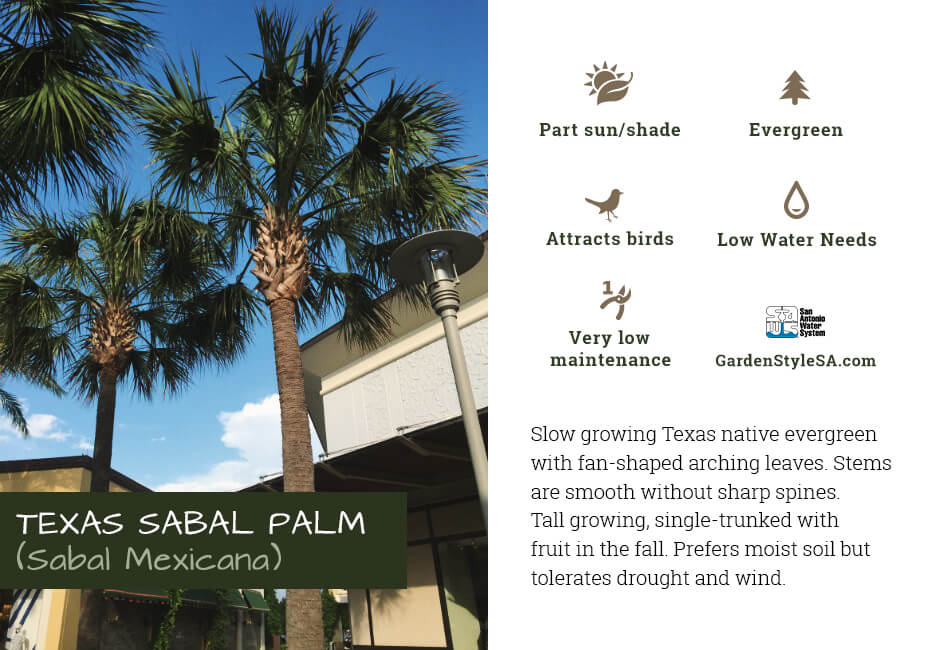Transform your backyard garden into a vacation destination — just add a Texas sabal palm or two. Now while our soils are hot is the perfect time to plant them.
When many people think of a vacation they think of palm trees swaying in the wind. We get to create that vacation destination in our own yards. How cool it is to live in San Antonio!
Sabal mexicana – also known as Sabal texana and Texas palmetto – is native to south Texas from Brownsville up to Bexar County, and though winter hardy through central Texas it can even be seen growing in Dallas area gardens.
This is an ideal large tree to compliment your watersaver landscape, although it will take three years to become fully established in your garden. All species of sabal palms develop an extensive underground trunk before much top growth occurs.
The Mexican sabal can grow 50 feet tall in many decades with beautiful bluish-green leaves. The dark fruit (seeds) that ripen in the fall are a food source for wildlife. This evergreen tree can be planted in full hot sun or part shade. The more shade the leaves receive, the longer the leaf stem so provide ample space away from buildings. Generally we plan on 12-15 feet spacing between individuals and away from buildings.
The leaves do not have any thorns and require very little pruning as this is a slow-growing palm. The lack of thorns is a key feature for all sabal palms and will assist you in your selection of the perfect palm in the nursery. And when you do prune, it is so much more enjoyable than with other palms. Pruning is frequently done in the winter when habitants of the fronds are in hibernation.
Palms and cycads require warm soils for planting, just the opposite of most trees. Now while our soils are hot is the perfect time to plant the Mexican sabal and enjoy the calming sound of her leaves rustling in the wind in your own garden paradise.
Key Facts:
- Sun Preference: Full sun to partial shade
- Mature Height: 50 feet
- Growth Rate: Slow, half to 1 foot per year once established
- Watering: Frequent but light for first 6-8 months, then low once established starting with year four
- Drought Tolerance: Excellent
- Cold Hardy: 10 degrees F
- Pruning: Only when lower leaves turn yellow or brown or as needed for safety when young and leaves are in the path of animals, people or vehicles. Nutrients are being transferred from yellow leaves to new green ones.
- Fertilizer: Palm tree fertilizer recommended three times per year for optimum health.
- Pests: Palmetto weevil


